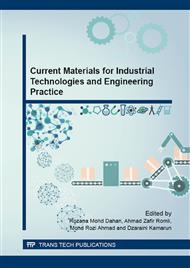p.203
p.209
p.213
p.220
p.225
p.231
p.236
p.243
p.249
Determination of White Root Infected Rubber Tree through Dielectric Characteristic in Latex
Abstract:
White root disease caused by Rigidoporus lignosus is one of most serious disease in rubber plantation. Until now, research about white root disease relates to electrical properties is still less. Hence, this research investigated the differences in electrical properties of healthy and white root disease through dielectric constant value. Seventy six samples of healthy and white root disease respectively were collected from rubber estate located in Kota Tinggi, Johor. Measurement of dielectric constant value for both conditions of latex has been done using Electrochemical Impedance Spectroscopy (EIS) in the range of frequency between 50 Hz up to 10 kHz. The result obtained from this measurement was proceeding with the statistical analysis to analyze the differences of healthy and white root disease. It was found that at frequency 150 Hz, the dielectric constant of healthy and white root disease have show significant differences.
Info:
Periodical:
Pages:
231-235
Citation:
Online since:
December 2015
Price:
Сopyright:
© 2016 Trans Tech Publications Ltd. All Rights Reserved
Share:
Citation:


